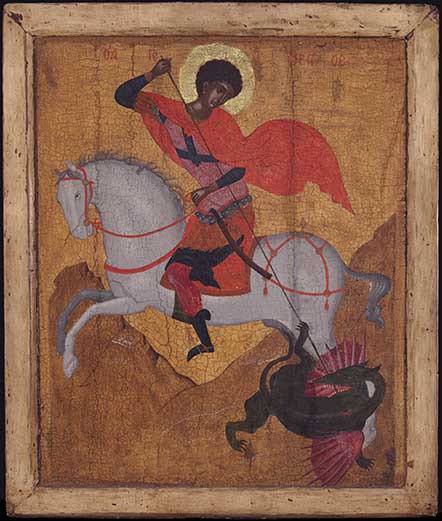Imprinting the Divine
dal 20/10/2011 al 17/3/2012
Segnalato da
20/10/2011
Imprinting the Divine
Menil Collection, Houston
"Byzantine and Russian Icons from the Menil Collection" examines these works not in an attempt to situate them within a particular context, but rather to explore how they were designed to transcend time and place.

The Menil’s collection of Byzantine icons is widely regarded by scholars in the field as one of the most important of its kind in the United States. The group of more than sixty works, many of which were acquired by Dominique de Menil in 1985 from the noted collector Eric Bradley, spans six-hundred years, from the 13th to the 18th centuries, and encompasses a number of distinct cultures including Greek, Slavic, and Russian. Taking the diversity of the collection into account, “Imprinting the Divine: Byzantine and Russian Icons from the Menil Collection” examines these works not in an attempt to situate them within a particular context, but rather to explore how they were designed to transcend time and place.
In order to be effective as a conduit to the sacred, an icon from this period comprised certain characteristics: fidelity, an icon functioned only if it was faithful to the subject it represented; recognizability, the image had to be easy to remember; and combinability, it had to blend familiar elements into new messages. Byzantine thinkers often likened the image of an icon to the imprint of a seal, distinct from the seal itself, but indelibly bound to it by its shared form. A more modern analogy is mechanical typography. The printer’s block imprints paper, as a seal would wax, leaving letter forms so common we refer to them as “type.” An icon’s task is to make the image of a figure, theme, or event, similarly recognizable. Where icons differ from seals or type, however, is in their medium. The icon must imprint itself not on paper, wax, or metal, but on the volatile energies of the human mind.
While we associate highly regularized images with predictability and even boredom, icons managed to sustain their intensity over centuries, cultures, theological stances, and techniques of production. Employing established compositional tropes, they assume an appearance of radical straightforwardness, but are complicated by a variety of strategies that repeat but also refresh, revise, and renew. “Imprinting the Divine” invites viewers to explore how icons have maintained their power to surprise and impress.
Organized for the Menil Collection by guest curator Annemarie Weyl Carr, Professor Emeritus, Southern Methodist University, Dallas.
This exhibition is generously supported by Fayez Sarofim, the John P. McGovern Foundation, The Levant Foundation, the Linbeck Family Charitable Trust, an anonymous donor, Fulbright & Jaworski L.L.P., and the City of Houston.
Opening 21 octobet
Menil Collection
1515 Sul Ross Street Houston
Hours: 11:00 a.m – 7:00 p.m. Wednesday – Sunday. The museum is closed Mondays and Tuesdays.
Admission free



